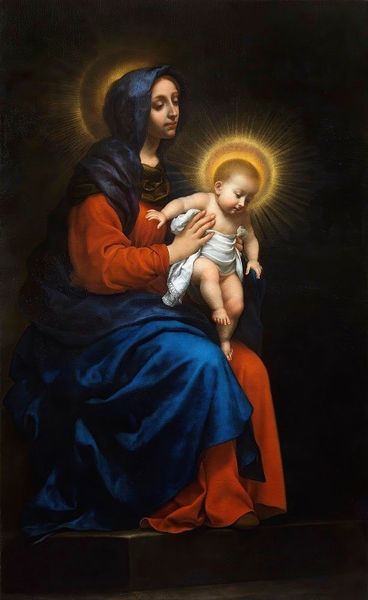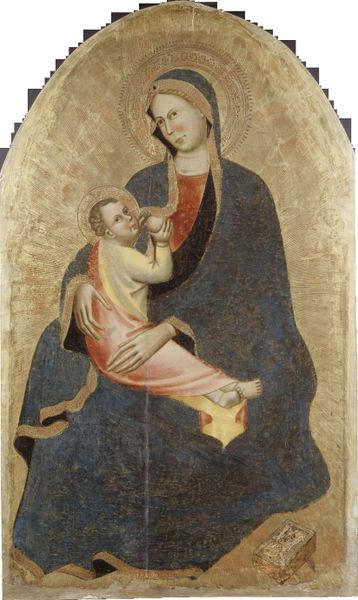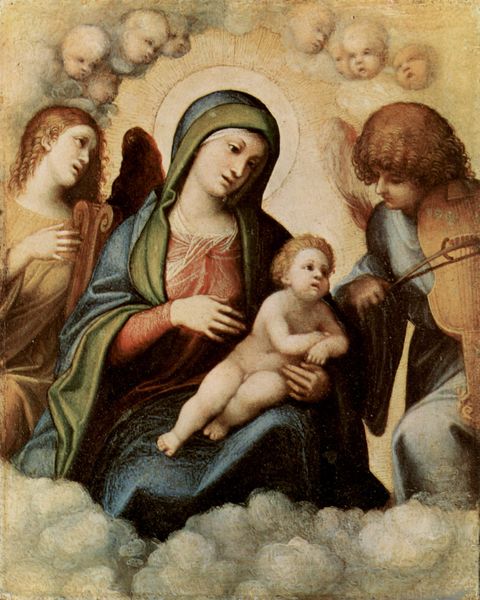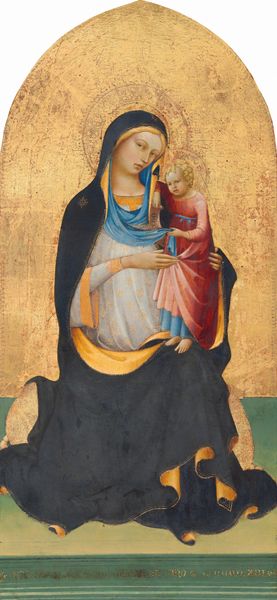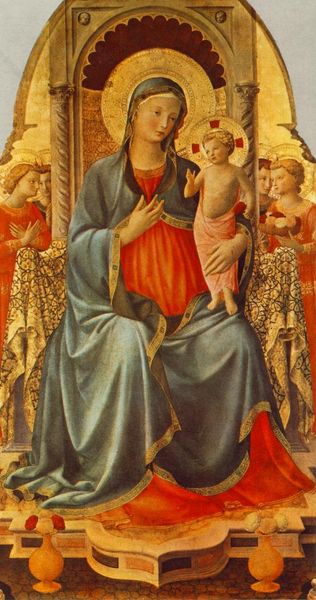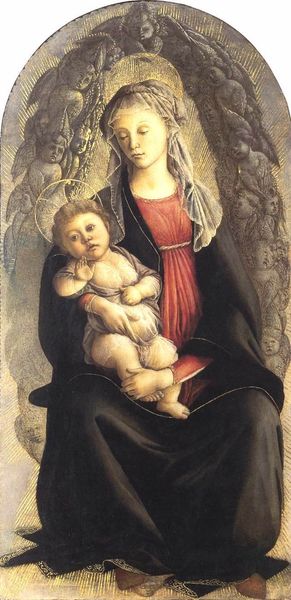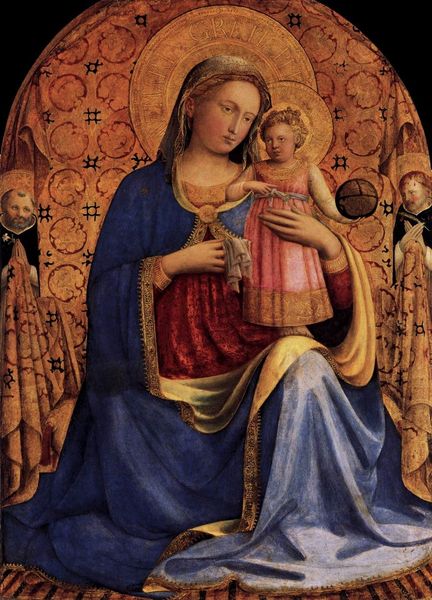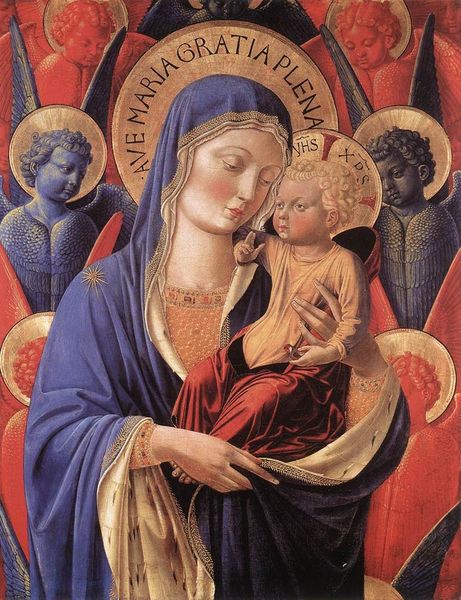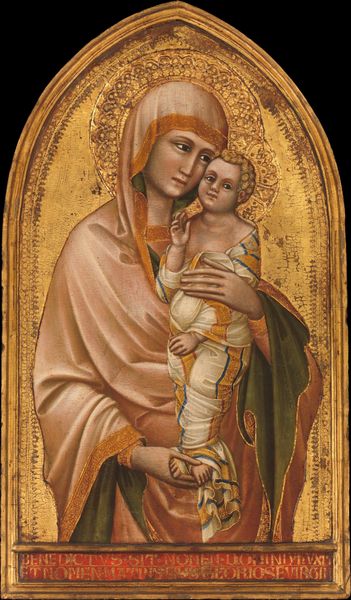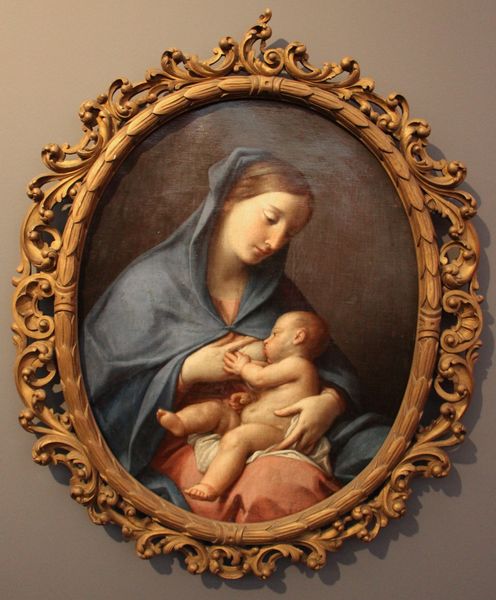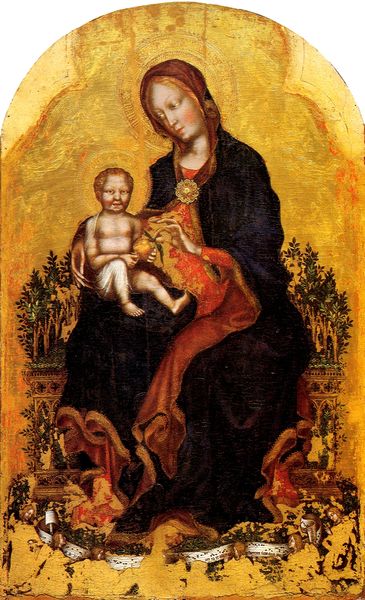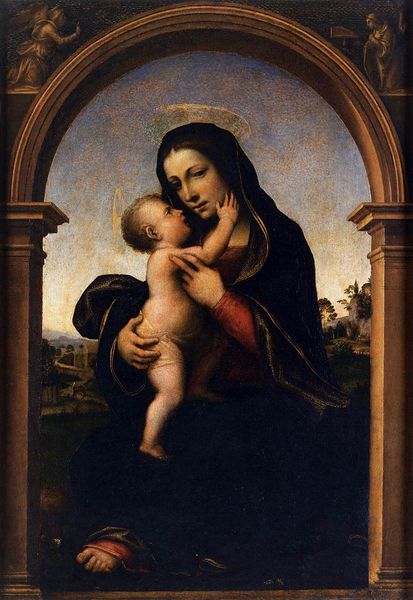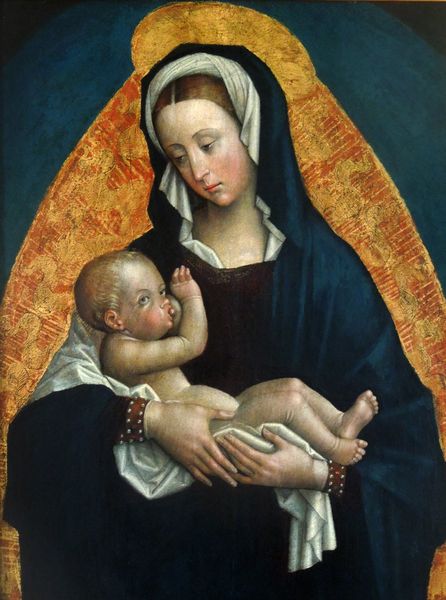
painting, oil-paint
#
portrait
#
gouache
#
painting
#
oil-paint
#
painting painterly
#
history-painting
#
italian-renaissance
#
portrait art
#
watercolor
Copyright: Public Domain: Artvee
Editor: This is Christoffer Wilhelm Eckersberg's "The Virgin and Child" from 1816. It looks like an oil painting, maybe with some watercolor. The folds in Mary's drapery look heavy, substantial. How would you interpret the work, especially considering the materials? Curator: Well, let’s consider the implications of Eckersberg choosing oil paint at this time. While referencing Renaissance models – think of the subject and the sfumato-like background of cherubs – oil paint allowed for a precision and layering of detail that connected to broader changes in material science and industrialization. Do you notice how the colors seem almost… manufactured? Editor: Manufactured is an interesting word choice. I see that the blues and reds in the Virgin’s clothes are very uniform. Not the naturally derived colors I’d expect if, say, it was painted a century or two prior. Curator: Exactly. The shift to industrialized pigments in the 19th century had profound effects on art making. Eckersberg, consciously or not, participates in that shift. The way the paint is applied—smooth, almost seamless—also speaks to a kind of emerging aesthetic of industrialized production. What does that say about the portrayal of motherhood in this piece? Editor: It almost removes the hand of the artist, focusing more on the iconic figures themselves. The material reality almost fades into the background… though maybe that was the intent all along. The labor isn't emphasized; the idealized image is. Curator: Precisely! And think about who was consuming these images and what kind of social message is conveyed by this subtle reference to new means of production through materiality. It really pushes us to rethink how we consider not just religious imagery, but art production as a whole. Editor: That’s given me a lot to consider. It's easy to get caught up in the Renaissance influences, but examining the materials provides a very different understanding.
Comments
No comments
Be the first to comment and join the conversation on the ultimate creative platform.
